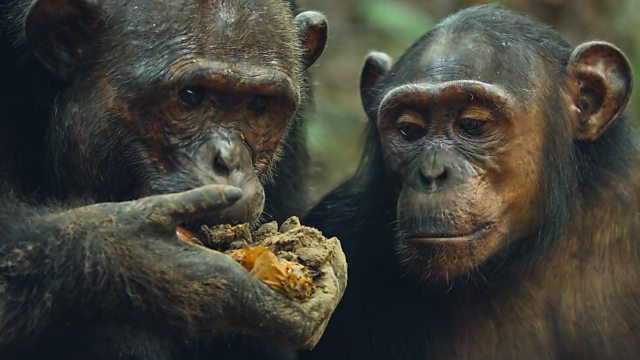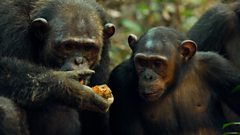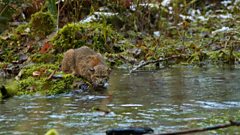From deep in the undergrowth to the highest tree, forests are home to two-thirds of all mammal species. Discover how they overcome the many challenges of life in a crowded world.
Sir David Attenborough reveals why forests are the ultimate test of survival for mammals and how they have overcome the challenges of life in this multidimensional, complex and continually changing environment. We rise up against the pull of gravity, travelling through the many layers of a forest, from the ground dwellers and their secret communications to the resourceful honey hunters and tenacious tree climbers, before heading into the skies above to witness the largest gathering of mammals on earth.
This episode features one of nature鈥檚 most iconic predatory mammals: the tiger. We meet a young tigress with one of the richest territories in India. Yet, with the heat of Indian summer, the odds are turned. Even with her iconic black and orange camouflage, her stealth and hunting strategies are put to the test. Mammalian intelligence helps her find an alternative strategy to succeed.
On the forest floor of Madagascar, the tiny tenrec has a remarkable way of keeping in touch. On its back is a patch of stiff bristles it can rub together and send a secret message to the rest of its family as they feed amongst the undergrowth. In the cold, damp forests of North America, a solitary bobcat has learned to use the many fallen logs that criss-cross the forest floor to help it hunt for a seasonal treat 鈥� spawning salmon. But lacking the thick waterproof coat and webbed feet of its neighbouring otters, it has to take a more cautious approach to catch its slippery supper.
In Africa, we feature our closest wild relatives 鈥� chimpanzees. With their knowledge and understanding of the jungle, they are able to find food where at first there appears to be none. But the young chimps lack the experience of their wise elders, who know how to avoid getting stung when searching for a real forest treat 鈥� honey. The troop, nonetheless, needs to work together to gain a more substantial meal 鈥� a red-capped mangabey monkey. Using their supreme strength and agility, they climb into the trees, where they set a cunning and tactical ambush for their unsuspecting prey.
The mantled howler monkeys of Costa Rica are amongst the loudest land animals on earth, and their call can be heard for miles throughout the forest. They live almost their entire lives at the top of the canopy, using their prehensile tail as a fifth limb to help them travel safely from tree to tree, rarely, if ever, coming to ground. But today, the troop faces a new challenge. As their forest habitat disappears, the alpha male must lead his family from one part of the forest to another, passing through a town on a perilous journey travelling along its electricity cables, where every step is now a deadly gamble.
Not all mammals are natural tree climbers, but in Uganda, a remarkable pride of lions has learned to make the most of its changing world. As temperatures rise, cactus-like euphorbia trees are spreading, and lions have discovered that not only is it cooler up in these spiny trees, but that they also make excellent watch towers from which to spot their prey.
In the snowy forests of the north, one mammal is perfectly at ease in the trees, gliding elegantly and effortlessly from one to another in search of food 鈥� the Siberian flying squirrel. But the only mammals to have truly mastered flight are the bats. In Zambia, we witness one of the planet鈥檚 greatest wildlife spectacles and the largest gathering of mammals seen anywhere on earth. From one small patch of forest, up to ten million fruit bats take to the air in search of ripening fruit in the surrounding forests. In the short space of time the bats are here, they will disperse over a billion seeds, helping to regenerate the forest. But today, this intricate balance between the bats and many other mammals that rely on forests is under threat, all due to the actions of the most successful mammal of all 鈥� us.
Last on
Clips
-
![]()
Chimpanzees look for a forest treat - honey!
Duration: 02:44
-
![]()
Howler monkeys risk electrocution
Duration: 01:57
-
![]()
A bobcat filmed, for the first time, fishing for salmon
Duration: 02:00
-
![]()
Siberian squirrels: Learning to fly
Duration: 02:59
Credits
| Role | Contributor |
|---|---|
| Narrator | David Attenborough |
| Producer | Justine Allan |
| Series Producer | Scott Alexander |
| Executive Producer | Roger Webb |





